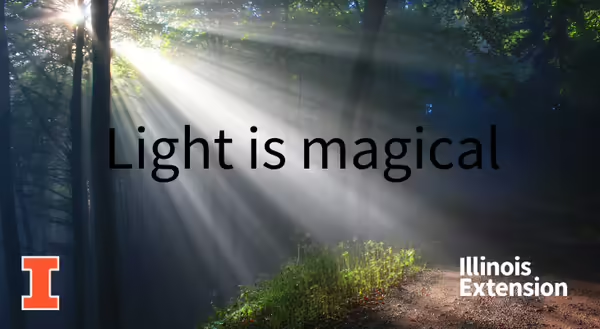
“I cannot endure to waste anything so precious as autumnal sunshine by staying in the house."
Nathaniel Hawthorne
When was the last time you noticed the light? I mean really noticed it. Not the, “oh it’s getting dark, I should turn on a light” notice, think deeper than that. As the days grow shorter, I find myself studying light. As a trained artist and photographer, perhaps that is not so surprising. Photography quite literally means, “Light writing”. But what is light?
In a word, light is life. Without it, the world as we know it wouldn’t exist. Plants would not photosynthesize. Without the plants there is no oxygen, no food, and so no people. It also is the key factor in how we perceive our world. Everything we see depends upon light bouncing off or bending around objects. Which is sensed by our eyes that send signals to our brain to form a picture. Pretty amazing, huh?
Light is mysterious and scientists still don’t fully understand it. It is a study of contrasts in that it is both a particle (photon) and a wave (frequency and wave length). But it doesn’t act like sound waves or ocean waves as it doesn’t need to travel through a medium (like air). In fact, it travels faster in a vacuum.
But light is more than just a scientific phenomenon. It changes our perceptions. It changes the look and feel of an object. This is what artists are talking about when they discuss the “quality of light”. How hard or soft does the light appear? When we consider hardness, we are looking at the shadows, specifically the contrast and the transition from highlights to shadows. Is it a slow and gradual transition with soft shadows (soft light) or is it quick and sharp transition with harsh shadows (hard light)?
Your light source affects the quality of light in two ways:
- The bigger the light source, the softer the light.
- The closer the object is to the light source, the softer the light will be.
I know what you are thinking, the sun is huge shouldn’t the light always be soft. Yes, it is huge, but it’s really far away, so it’s actually acts like a small light source.
Artists and photographers often talk about the “golden hour”, which is actually not just one time of day but two and is often not an hour.
- Morning golden hour, an hour after sunrise.
- Evening golden hour, an hour before sunset.
- Closer to the equator, shorter “golden hour”.
So, this month I invite you to observe the light at all hours of the day. What do you notice? How do objects look with the light behind them? How about straight overhead or at the “golden hour”? Try sketching them, keeping in mind the idea of shadows and highlights. If you do, I think you will find what I have, that light is magical.